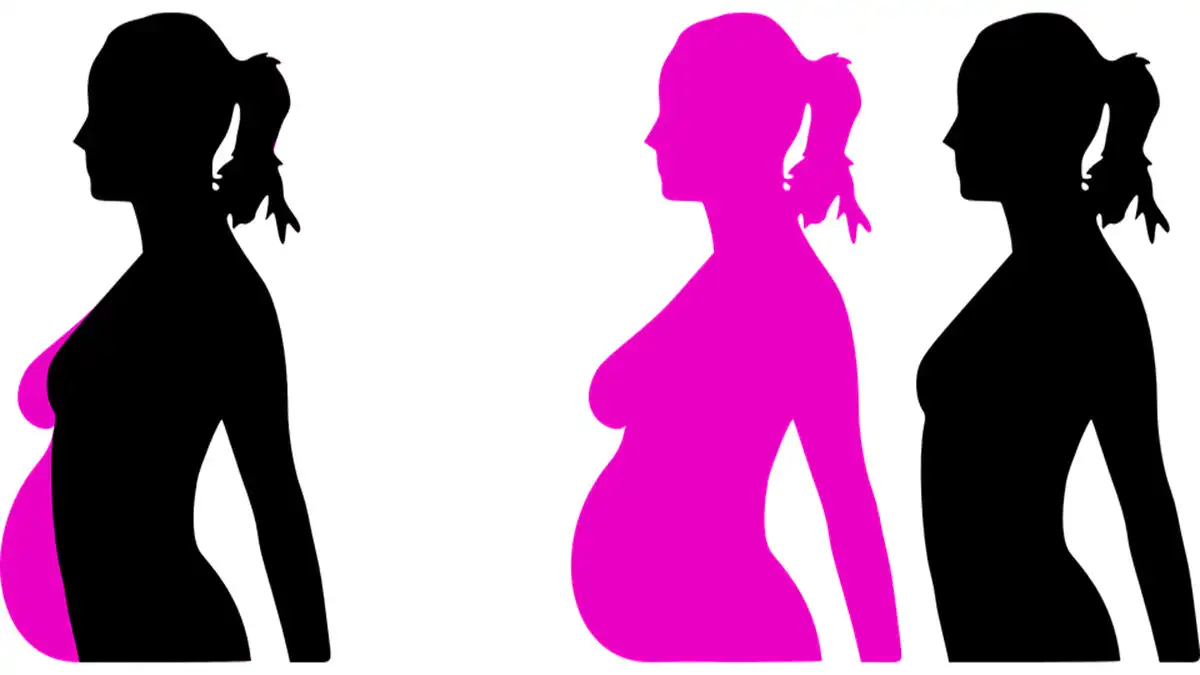- The American College of Obstetricians and Gynecologists has established contraindications to exercise during pregnancy and exercise recommendations for women without risk of adverse maternal or perinatal outcomes.
- Equipped with an understanding of the signs and symptoms of exercise cessation, pregnant women can exercise safely during pregnancy within these recommendations.
- Women who exercised regularly prior to becoming pregnant can continue to exercise with appropriate modifications; previously sedentary women or those managing medical complications should obtain a physician’s approval before beginning a new exercise program during pregnancy
Contraindications to exercise
Relative contraindications
- Severe anemia
- Unassessed maternal cardiac arrhythmia
- Chronic bronchitis
- Poorly controlled type I diabetes
- Extreme morbid obesity
- Extreme underweight
- History of extremely sedentary lifestyle
- Intrauterine growth restriction during current pregnancy
- Poorly controlled hypertension
- Orthopedic limitations
- Poorly controlled seizure disorder
- Poorly controlled hyperthyroidism
- Heavy smoker
Absolute contraindications
- Hemodynamically significant heart disease
- Restrictive lung disease
- Incompetent brain / cerclage
- Multiple gestation at risk of preterm labor
- Persistent bleeding in the second or third trimester
- Placenta previa after 26 weeks gestation
- Preterm labor in current pregnancy
- Ruptured membranes
- Preeclampsia / pregnancy-induced hypertension
Recommendations for Exercise During Pregnancy and Postpartum
- During pregnancy, women can continue to exercise and gain health benefits from light to moderate exercise routines. Regular exercise (at least three times a week) is preferable to intermittent activity.
- Women who exercised regularly prior to becoming pregnant can continue to exercise with appropriate modifications; previously sedentary women or those managing medical complications should obtain a physician’s approval before beginning a new exercise program during pregnancy
- Women should be aware of the decrease in oxygen available for aerobic exercise during pregnancy. They should be encouraged to modify the intensity of their exercise based on maternal symptoms. Pregnant women should stop exercising when they are tired and not exercise until they are exhausted. Weight-bearing exercises can, under certain circumstances, be continued at similar pre-pregnancy intensities throughout the pregnancy. Non-weight-bearing exercises, such as cycling or swimming, will minimize the risk of injury and make it easier to continue exercising during pregnancy.
- The morphological changes of pregnancy should serve as a relative contraindication to types of exercise in which loss of balance could be detrimental to maternal or fetal well-being, particularly in the third trimester. In addition, any type of exercise involving the potential for even mild abdominal trauma should be avoided.
- Pregnancy requires an additional 300 kcal/d to maintain metabolic homeostasis. Thus, women who exercise during pregnancy should be particularly careful to ensure adequate nutrition.
- Pregnant women exercising in the first trimester should increase heat dissipation by ensuring adequate hydration, appropriate clothing, and an optimal environment during exercise.
- Many of the physiological and morphological changes of pregnancy persist for 4 to 6 weeks after delivery. Thus, pre-pregnancy exercise routines should be resumed gradually, depending on the woman’s physical abilities.
Reasons for pregnant women to stop exercising and seek medical attention
- Any sign of blood flow from the vagina
- Any “gushing” of fluid from the vagina (premature rupture of membranes)
- Persistent contractions (> 6-8/hr) that may suggest the onset of preterm labor
- Unexplained abdominal pain
- Absence or decrease of fetal movements
- Sudden swelling of the ankles, hands and face
- Persistent and severe headaches and/or visual disturbances
- Unexplained feelings of discomfort or dizziness
- Swelling, pain and redness in the calf of a leg (phlebitis)
- Elevated pulse or blood pressure that persists after exercise
- Excessive fatigue, palpitations, throbbing pain
- Insufficient weight gain (
- Dyspnée avant l’effort
- Muscular weakness
Reference
- Wolfe LA, Hall P, Webb KA, et al. Prescription of aerobic exercise during pregnancy. Sports Med. 1989;8:273–301 and American College of Obstetricians and Gynecologists. Exercise during pregnancy and the postpartum period. ACOG Committee Opinion No. 267. Obstet Gynecol. 2002;99:171–173.
- American College of Obstetricians and Gynecologists. Exercise During Pregnancy and the Postpartum Period (Technical Bulletin 28-189). Washington, DC: ACOG; 1994.



























